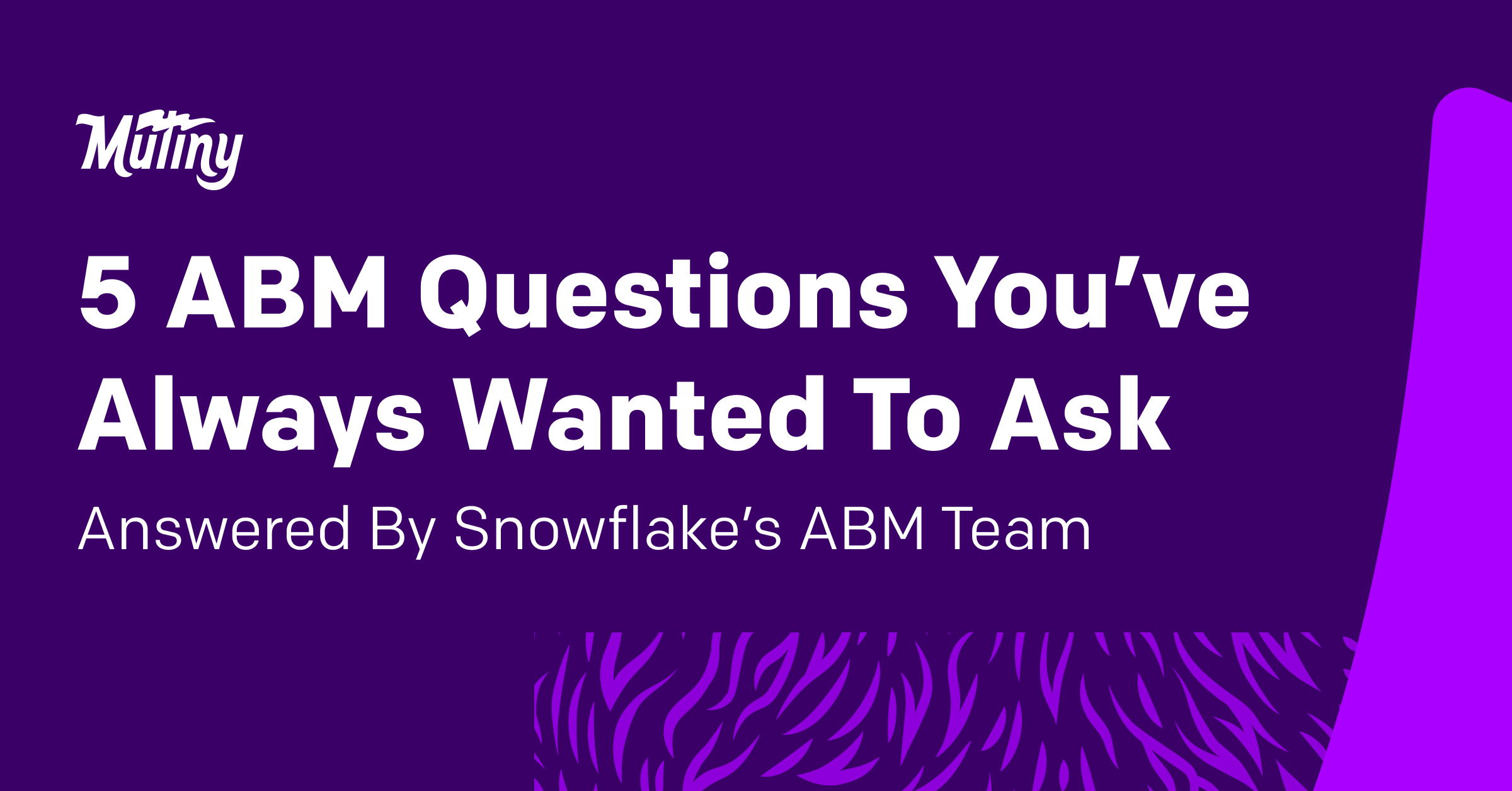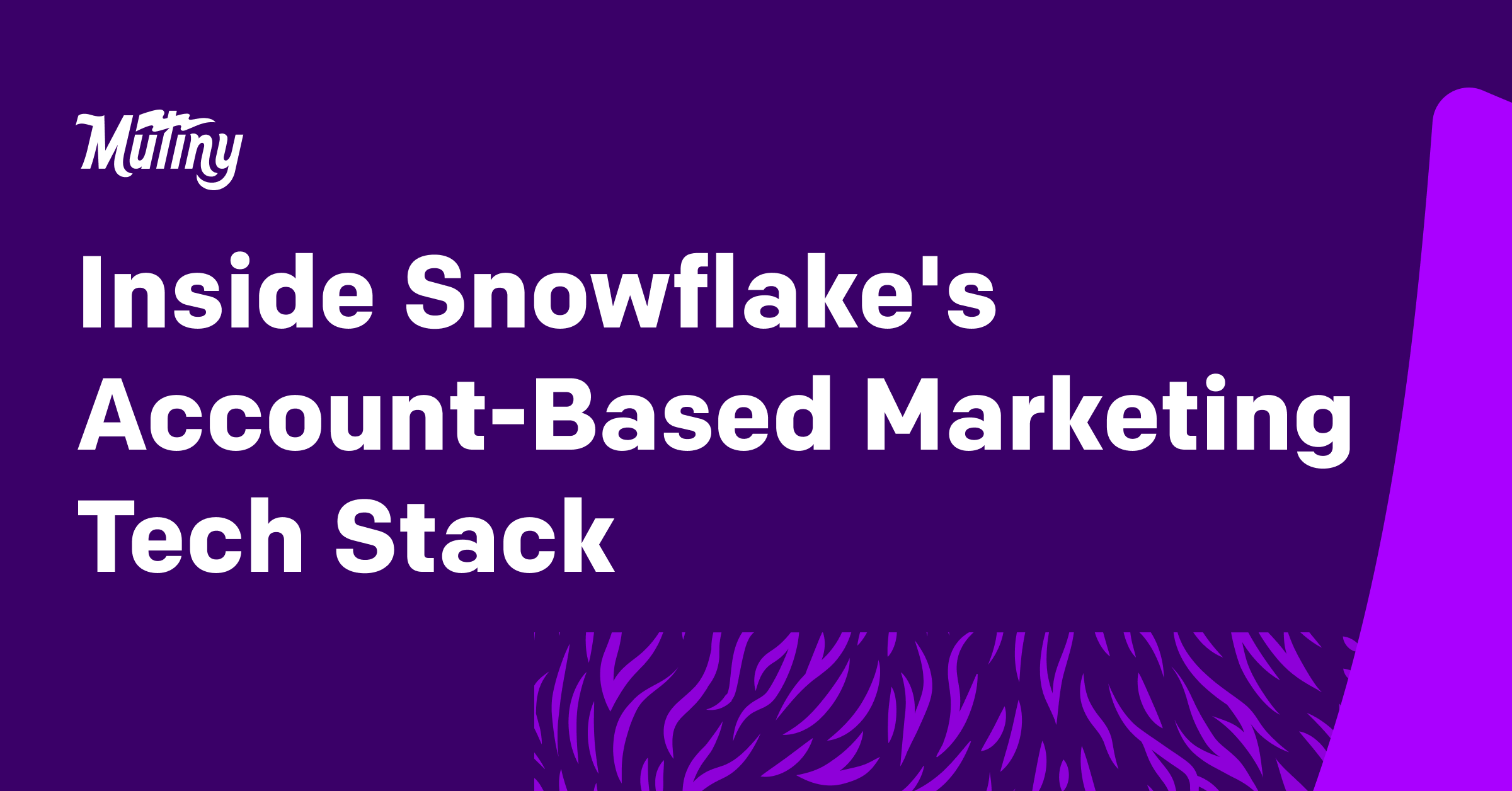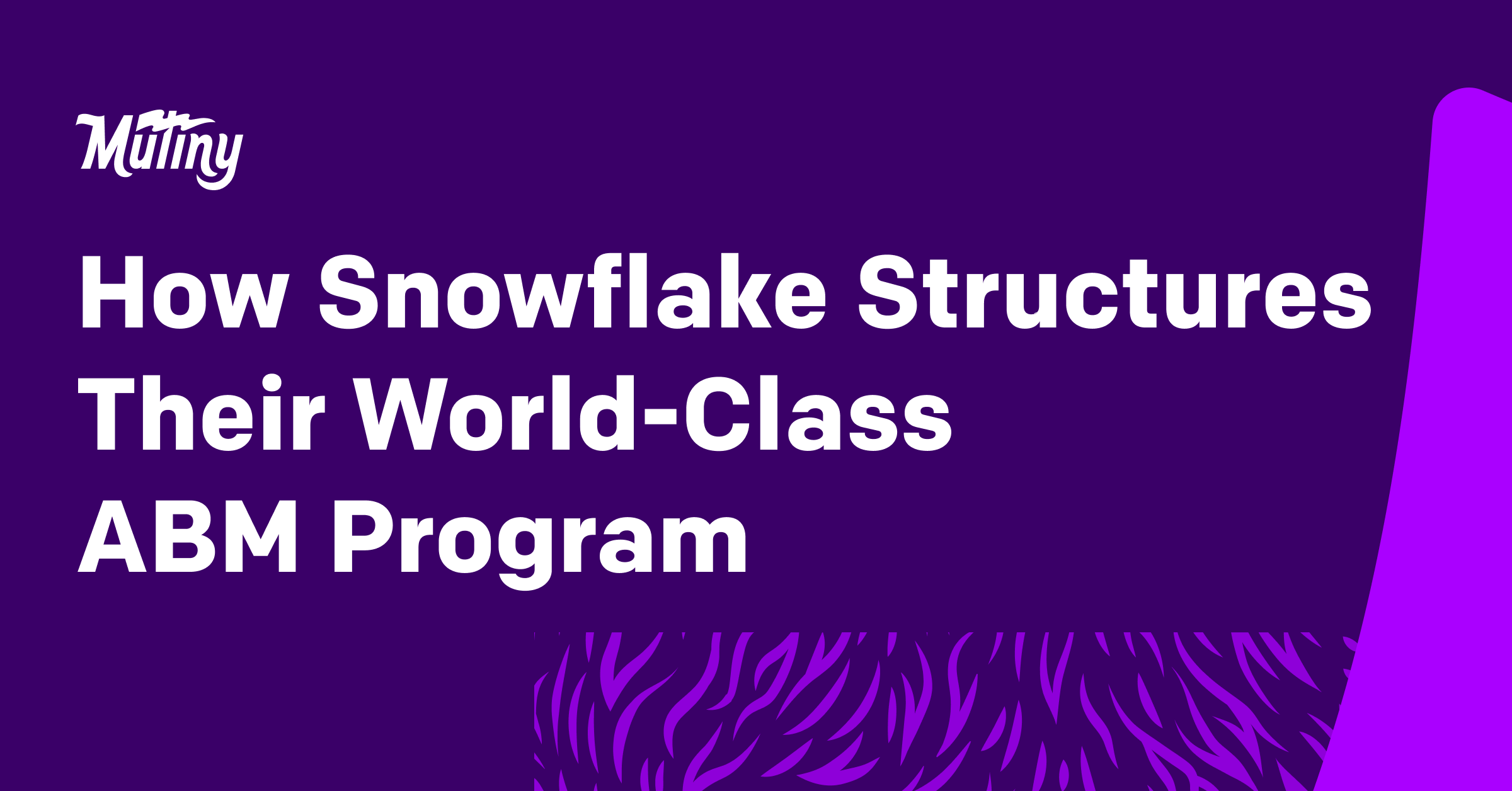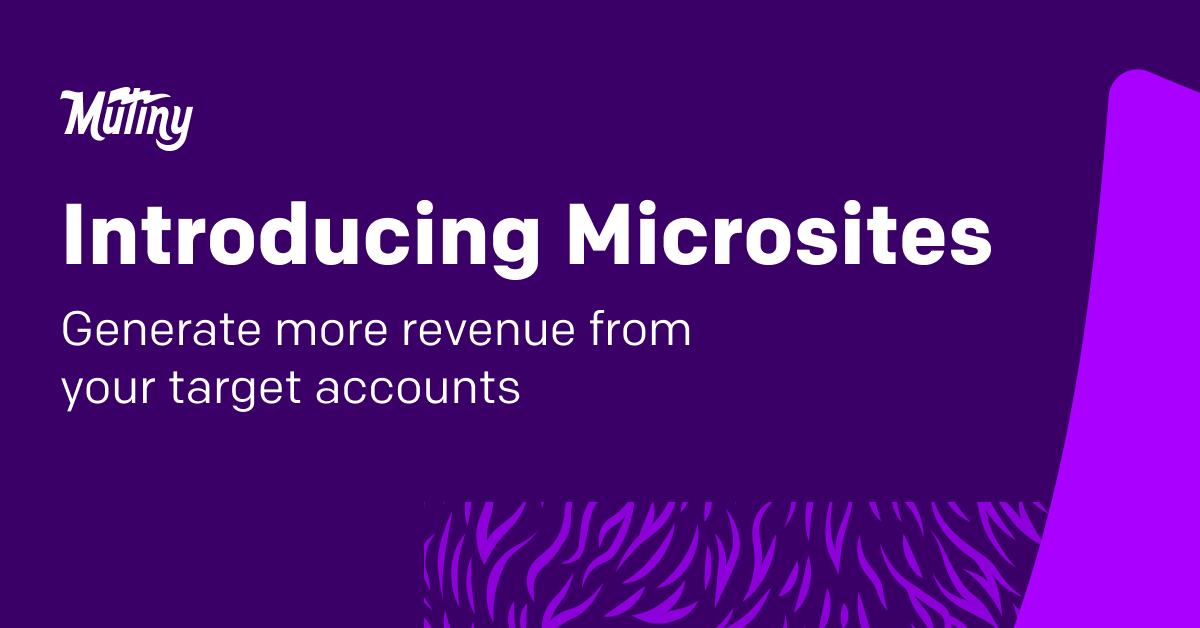- How it works
- Use cases
- Customers
- Insights
- Team
Want to get started?
See why companies like 6sense, Snowflake, and Amplitude use Mutiny to hit their pipeline goals.
Get started1:1 ABM personalization made easy
See how ABM teams use Mutiny to engage target accounts at scale.
See how Mutiny worksSnowflake runs an extremely efficient account-based marketing program. So when we had Casey Patterson, Sr. Manager of North American ABM, teaching an ABM class, we had to ask her to get specific with how they operate.
Here are the most important questions asked by the live audience to give you an even deeper view under the hood of Snowflake’s ABM program.
What is the primary goal for ABM at Snowflake?
We’ve seen a lot of marketing teams move away from prioritizing the measurement of individual channels, and move towards a wholistic pipeline view. Overall, I think this makes marketers much more accountable for driving top-line growth, and rallying behind a single goal rather than only focusing on single-player, channel-level metrics.
But you still need to have some sort of key performance indicator to measure the effectiveness of a program.
“The primary goal [of Snowflake’s ABM] is the percentage of accounts with meetings booked. Secondary goals include account engagement, such as visiting Snowflake assets, and the opportunity rate on meetings booked on target accounts.”
I really like this way of measuring ABM because it emphasizes the importance of a high-touch experience for target accounts. It also lets marketers focus on what they’re best at (driving awareness), and lets sellers focus on what they’re best at (building relationships).
What's the ABMer to Account Executive ratio at Snowflake?
Resourcing is one of the most common questions we hear when talking with companies who are in the early days of building an ABM program. Not only is ABM a new go-to-market (GTM) motion that requires a dedicated effort to learn and refine, but it can also be very resource intensive if done poorly.
The biggest cost associated with building an ABM program will typically be headcount. Understanding how many accounts a single ABMer can service will dictate how many accounts a single person can service, and therefore how scalable the ABM program is. “Our ratios cap at about 1 ABM for every 35 Account Executives (AEs).” Said Casey. This means that a single full–time ABMer is responsible for supporting 35 AEs with the necessary ABM collateral, digital assets, and support for those AEs to close their target accounts.
“This [ratio] varies by team and quarter; in Emerging markets, it could be hundreds of accounts per ABMer in 1:many campaigns, and fewer than 100 accounts per ABMer on the Industries side.”
Snowflake breaks their ABM team into different regions and responsibilities to provide full coverage.
As Casey mentioned, their Industries team are targeting very strategic accounts that require heavily-personalized experiences tailored exclusively for that account. These assets include 1:1 personalized microsites, which are dynamically updated based on:
Industry
Stage in the buying cycle
New intel from sales conversations
Publicly available information
These accounts require more effort, and therefore will have a lower ABMer to AE ratio, compared to their Emerging Market team who handles many more accounts. These accounts still get personalized experiences, but the resolution will be at a 1: many level.
How do you manage collaboration and attribution between ABM and inbound marketing?
The reality of a modern buying process is that they’re messy; someone might spend weeks or months bouncing around from asset to asset, doing their own research across all channels (both online and offline), before finally booking a sales meeting and becoming a sales-accepted deal.
So this begs the question: who should get attribution for a named account becoming an active deal? The demand generation (DG) team, or the ABM team?
“We avoid specific ‘crediting’ within marketing teams to prevent division. We measure the ‘lift’ on target accounts—comparing how much more engaged target accounts are than non-target accounts.” Said Casey about the relationship between the various Snowflake marketing teams.
“DG is primarily focused on producing Service Level Agreements (SLAs) from our entire database, not just target accounts. ABM and DG efforts usually create a virtuous cycle on target accounts.”
How do you approach ABM campaigns for accounts with active opportunities?
As we’ve learned more about the ABM programs at other technology companies, we’ve seen that many also measure the effectiveness of the program by how it’s able to accelerate deals that are already in the pipeline.
With longer deal cycles that can last over 6 months, continuous education and multi-threading are crucial in keeping the deal alive. “We use Marketo to track website/email activity and have an ‘engagement’ formula within Snowflake that scores different items differently.” Said Casey. “We focus on website activity on ABM pages or the global Snowflake website.”
Snowflake's ABM technology stack uses their own platform as the source of truth, where 1st and 3rd-party data is piped into. They then create their own engagement algorithms to identify intent signals and then use Mutiny to deliver the most relevant personalization for each account.
Check out the full breakdown of Snowflakes ABM tech stack and their 4-layered data strategy.
“In the future, we're interested in using AI to optimize landing page content based on account metrics.”
What tactics work when selling to a technical buyer?
Snowflake sells into highly technical industries that require deep subject-matter expertise to close the deal. What can we learn from them that can be applied to our hardest-to-please prospects?
“It's crucial to understand what's not working first. If there's low engagement or no meetings, we'd address that. For our technical buyers, we're seeing good results with personalized content and targeted outreach.”
The beauty of ABM is that you can leverage your sellers (whether they be AEs or SDRs) to deliver content directly to contacts at your target accounts through email. As they’ve already developed first contact and had a meeting, sending a friendly check-in email with a link to a relevant learning resource is always a good tactic.
And your sellers will appreciate not having to manually update the assets when you use Mutiny to automatically deliver the right piece of content with the right messaging.
Want to see inside other high-performing ABM programs? The ABM MBA showcases ABM leaders as they show you under-the-hood of how they market to their target account.
Learn things like:
How Qualtrics scales 1:1 microsites to hundreds of accounts.
How 6sense delivers a cohesive and relevant website experience across the buying journey.
What tech stack and team structure works at each stage in your ABM maturity.
Casey Patterson
Sr. Manager of ABM at Snowflake
Share this Post
Learn to drive more pipeline
Curated resources to accelerate your career
Learn how top B2B marketers are driving pipeline and revenue.





